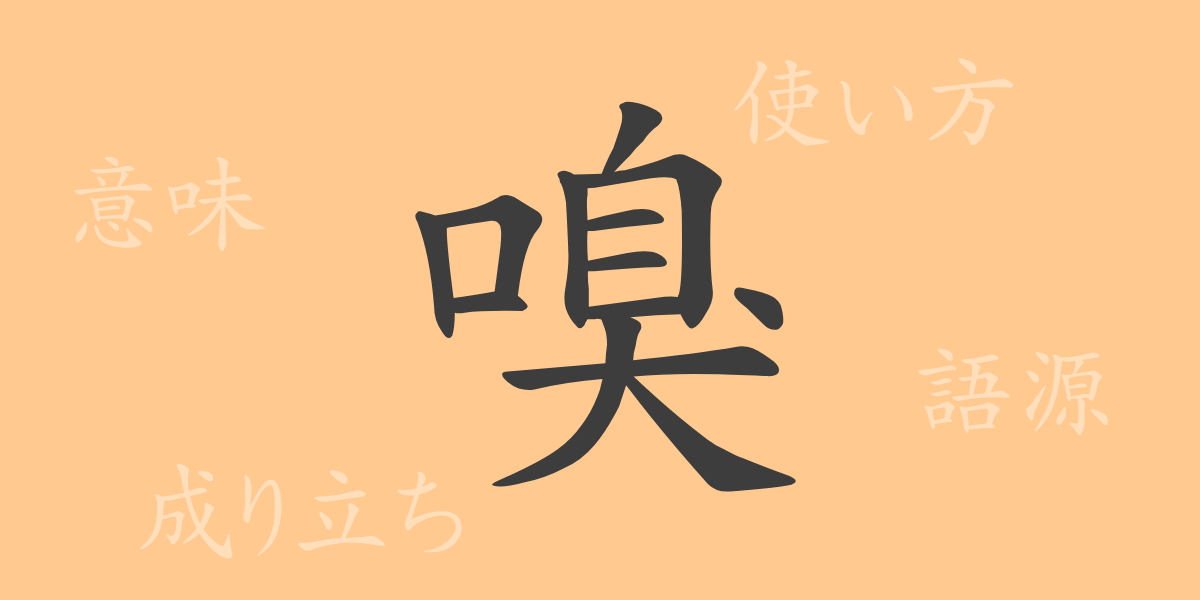The Japanese language is rich in expressions that convey emotions and sensations. Among them, “嗅(かぐ, kagu)” is a character that represents the sense of smell, seamlessly integrating into our daily lives. This article delves into the charm of the kanji “嗅(かぐ, kagu),” exploring its origin, meaning, usage, and role in Japanese culture.
Origin of 嗅(かぐ, kagu)
The kanji “嗅(かぐ, kagu)” developed from ancient Chinese pictographs that depicted the act of inhaling through the nose. Originally, it was a combination of “自(じ, ji)” representing the nose and “又(また, mata)” representing breath emanating from the mouth. Over time, the character evolved into its current form. This kanji intuitively evokes actions related to the sense of smell, and its origin is directly connected to visual understanding.
Meaning and Usage of 嗅(かぐ, kagu)
The kanji “嗅(かぐ, kagu)” primarily means “to smell” or “to sense an odor.” It literally refers to the act of using the nose to perceive a scent or odor. In Japanese, it is commonly used as the verb “嗅ぐ(かぐ, kagu),” as seen in phrases like “花の香りを嗅ぐ(はなのかおりをかぐ, hana no kaori wo kagu)” meaning “to smell the fragrance of a flower,” or “危険を嗅ぎ取る(きけんをかぎとる, kiken wo kagitoru)” meaning “to sense danger.”
Readings, Stroke Count, and Radical of 嗅(かぐ, kagu)
The basic information about the kanji “嗅(かぐ, kagu)” is as follows:
- Reading: The on-yomi (Chinese reading) is “キュウ(きゅう, kyū),” and the kun-yomi (Japanese reading) is “かぐ(かぐ, kagu).”
- Stroke count: It has a total of 13 strokes.
- Radical: The radical is 口(くち, kuchi), meaning “mouth.”
Idioms, Proverbs, and Expressions Using 嗅(かぐ, kagu)
There are several idioms, proverbs, and expressions that include “嗅(かぐ, kagu).” Here are a few examples:
- 嗅覚(きゅうかく, kyūkaku): The sense of smell.
- 嗅ぎつける(かぎつける, kagitsukeru): To sniff out or detect something.
- 嗅ぎ分ける(かぎわける, kagiwakeru): To distinguish between different scents or odors.
These expressions demonstrate the ability to identify and perceive scents in daily life. Additionally, actions like “to sniff out” are often used in proverbs that describe coincidence or fate, such as “犬も歩けば棒に当たる(いぬもあるけばぼうにあたる, inu mo arukeba bō ni ataru),” meaning “every dog has its day.”
Summary of 嗅(かぐ, kagu)
The kanji “嗅(かぐ, kagu)” symbolizes the sense of smell, one of our five senses. Its reading, meaning, and usage are widely integrated into the Japanese language, making it an essential element for expressing sensations. The presence of “嗅(かぐ, kagu)” through the perception of scents and odors teaches us about the depth of language and the richness of human senses.

























